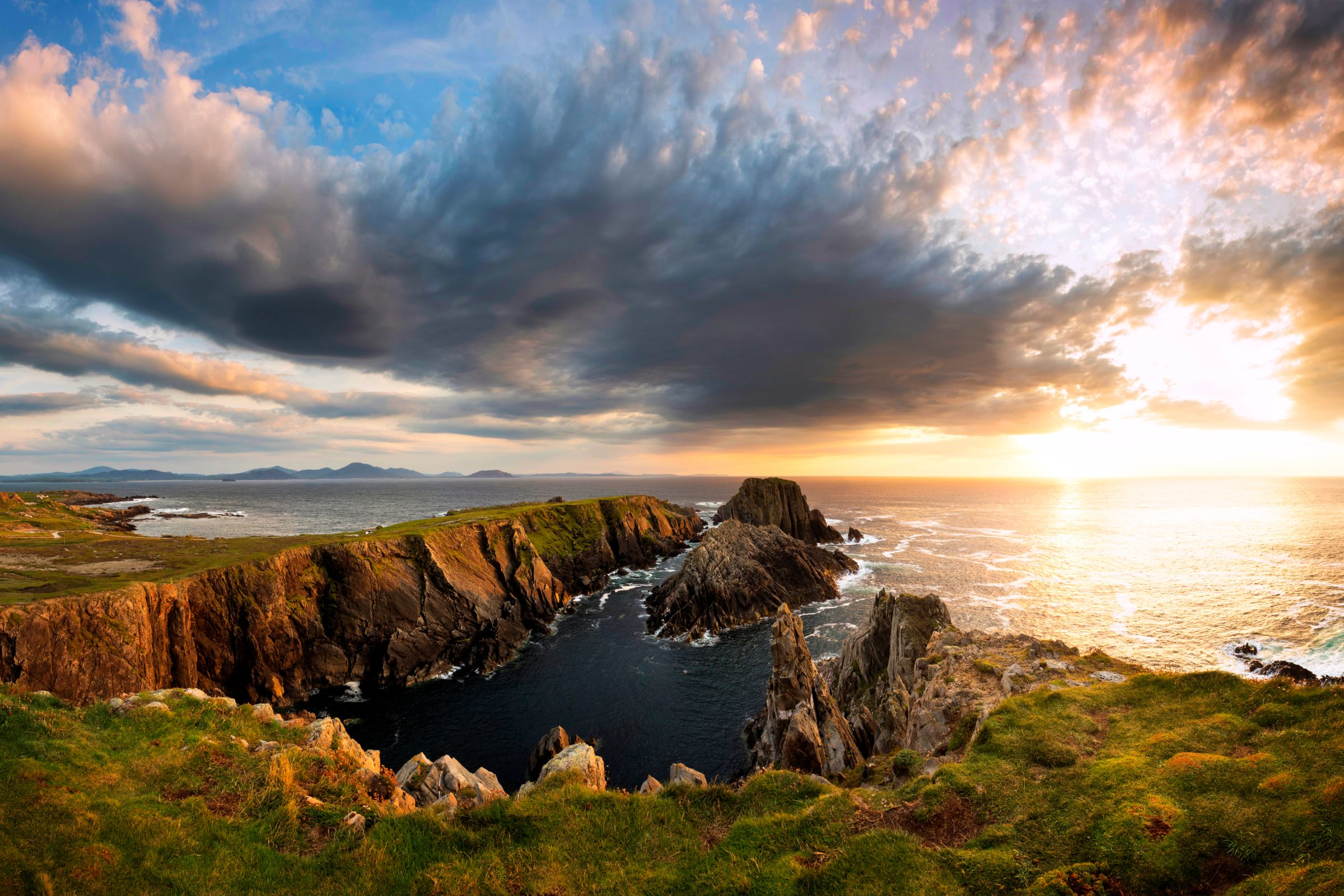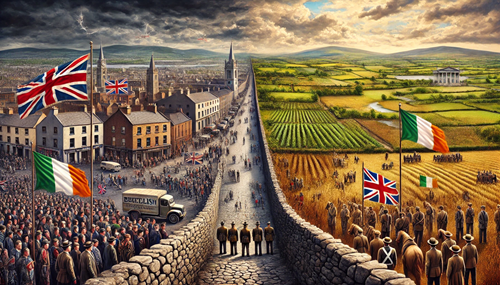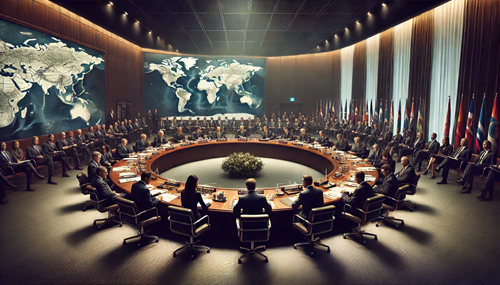Donegal is not in Northern Ireland because it is part of the Republic of Ireland. This distinction dates back to the partition of Ireland in 1921, which created Northern Ireland as a separate entity within the United Kingdom, while Donegal remained within the newly established Irish Free State, now known as the Republic of Ireland.

Source: Discover Ireland
Donegal's unique geographic location, with its rugged coastline and scenic landscapes, often makes it feel remote and distinct from both Northern Ireland and the rest of the Republic. During my visits to Donegal, I found its cultural richness and natural beauty captivating, highlighting its strong identity as part of the Republic of Ireland.
What Events Led to Donegal Not Being Part of Northern Ireland?
Donegal, a county in the northwest of Ireland, is notably absent from the configuration of Northern Ireland, despite its geographical proximity to the region. The historical, economic, and demographic factors that influenced this outcome can be traced back to pivotal events in early 20th century Irish history.
These events collectively contributed to shaping the political landscape of Ireland, ultimately determining county Donegal's affiliation with what is now the Republic of Ireland rather than Northern Ireland. The following sections delve deeper into the specific occurrences that led to this territorial arrangement.
The Partition of Ireland

The partition of Ireland in 1921 marked a pivotal moment in the island's history, fundamentally dividing it into two separate political units. This event did not occur in isolation; it was the culmination of complex and protracted negotiations between British authorities and Irish nationalists, sparked by escalating demands for Irish self-governance which had intensified since the late 19th century.
The Government of Ireland Act of 1920, which officially sanctioned the partition, aimed to quell the growing unrest by establishing distinct governments for the predominantly Protestant north and the predominantly Catholic south. This legislation was seen as a compromise, although it was far from universally accepted on either side of the religious or political spectrum.
Historically, the roots of this division trace back to the early 17th century, when the Plantation of Ulster saw a significant influx of British Protestant settlers in the northern part of Ireland, which laid the foundation for distinct cultural and religious identities within the island. By the time of the partition, demographic data indicated that the north-eastern part of Ireland, which became Northern Ireland, had a substantial Protestant majority, accounting for approximately 65% of its population, contrasting with the overwhelmingly Catholic rest of the island.
The immediate consequences of the partition in 1921 were significant and long-lasting. Politically, it led to the establishment of the Irish Free State in 1922 (which would become the Republic of Ireland in 1949), while economically and socially, it contributed to a century of intermittent conflict and division, epitomized by the Troubles of the late 20th century. The border created by the partition, initially intended as a temporary measure, has endured, evolving over the decades under various political agreements and becoming a symbol of the complexities of Irish-British relations.
The Boundary Commission

The partition of Ireland, a significant historical event, led to the establishment of the Boundary Commission under the auspices of the Anglo-Irish Treaty. This Commission was tasked with the delicate and critical job of determining the precise borders of Northern Ireland, taking into account a mix of economic, geographic, and demographic considerations. The primary aim was to create boundaries that reflected the economic realities and cultural communities of the region as fairly as possible.
In the wake of the 1921 Treaty, the Boundary Commission faced considerable challenges. Economic interdependencies and the geographic continuity of regions were weighed against the clear expressions of national identity and preference by local populations. For example, County Donegal presented an interesting case study. Despite its geographic position in the north, it was predominantly nationalist, with a strong Catholic majority that ideally aligned it with Southern Ireland.
Statistically, during the early 20th century, Donegal had a significant Catholic majority, with over 80% of its population adhering to the faith, mirroring the demographic profile of what would become the Irish Free State. Economically, however, Donegal was isolated from the main economic centers of Northern Ireland, such as Belfast and Derry/Londonderry, which were industrial powerhouses. This isolation was exacerbated by poor infrastructure connections with the northern counties, which hindered economic integration.
The Commission's considerations were further complicated by the political pressures and the significant consequences its decisions would have on the future of Irish politics and Anglo-Irish relations. The ultimate decisions of the Boundary Commission were awaited with bated breath by both sides, but the report was initially suppressed due to the controversial and sensitive nature of its findings, only being published much later, reflecting the complex interplay of the various factors it had to consider.
Economic and Geographical Factors
Donegal's unique economic and geographic attributes significantly influenced its separation from Northern Ireland. Located in the northwest of Ireland, Donegal is characteristically remote and rugged, leading to its geographical isolation. Unlike the northern counties that were part of the industrial boom, Donegal maintained closer economic ties with the west and south of Ireland, areas that were similarly rural and agricultural. This distinct economic alignment was critical in the partition decisions of the early 20th century.
Furthermore, Donegal's infrastructure connectivity with Northern Ireland was markedly poor. For instance, transportation and communication links were more robustly developed with cities like Dublin and Limerick rather than with Belfast or Derry. This lack of infrastructure unity further emphasized the county's economic separation from the north. As of recent statistics, Donegal still has one of the lowest levels of industrial employment in Ireland, underlining its economic distinctiveness.
Moreover, the demographic and political landscape of Donegal played a significant role. During the time of Ireland's partition in 1921, Donegal had a strong nationalist majority. About 91% of its population supported nationalist parties, a stark contrast to the pro-union majorities in the north-eastern counties. This overwhelming nationalist sentiment was pivotal in advocating for Donegal's inclusion in what would become the Republic of Ireland.
What Political Decisions Determined Donegal’s Exclusion from Northern Ireland?
The division of Ireland into North and South hinged on several key political decisions. In the early 1920s, the Government of Ireland Act established Northern Ireland, comprising six northeastern counties. Donegal, despite its northern location, was not included due to its large Catholic majority, which aligned more closely with the predominantly Catholic and nationalist sentiment of what would become the Republic of Ireland.
Economic factors also influenced the decision. Donegal's economic ties were stronger with counties in the Republic than with those in the North. Additionally, strategic considerations during the negotiations favored a more defensible border, which the current boundaries provided.
Thus, the political and economic landscape at the time shaped Donegal’s exclusion from Northern Ireland, resulting in its alignment with the Republic of Ireland.
Geographic Reasons Why Donegal is Not Part of Northern Ireland
Donegal's exclusion from Northern Ireland can be attributed to a combination of geographical, historical, and cultural factors. This northwestern county of Ireland, despite its proximity to Northern Ireland, remains part of the Republic due to specific historical decisions, unique physical geography, and distinct socio-political dynamics. Understanding why Donegal is not in Northern Ireland requires delving into the intricate details of its location, the historical boundaries established during Ireland's partition, and its rugged landscape which sets it apart from its northern neighbors.
Geographic Location and Borders
Donegal's position in the extreme northwest of Ireland, surrounded by the Atlantic Ocean and bordered only by three counties, that are part of the Republic of Ireland, fundamentally shapes its separation from Northern Ireland. The county's only connection to Northern Ireland is a short border with County Fermanagh to the east, separated by the natural barrier of the Lough Erne system. This geographic isolation from the main body of Northern Ireland has contributed significantly to its separate administrative and political status.
Historical Boundaries
The partition of Ireland in 1921, which divided the island into Northern Ireland and the Irish Free State, was influenced heavily by political and religious demographics. Donegal, with its predominantly nationalist and Catholic population, was naturally aligned with the Irish Free State. The division was not just political but also reflected the prevailing cultural and social sentiments of the local populace, which differed markedly from those in the northern counties that formed Northern Ireland.
Physical Geography and Cultural Identity
Donegal's physical geography, characterized by rugged mountains, deep glens, and an extensive coastline, has fostered a distinct cultural identity. These geographical features have historically made access to and from Northern Ireland challenging, encouraging economic and social orientation towards the rest of the Republic. The county’s scenic landscapes, including the iconic Slieve League cliffs, also contribute to a sense of uniqueness and isolation from the urban centers of Northern Ireland, reinforcing its separate development path.
Demographic Reasons Why Donegal is Not Part of Northern Ireland
The question of why Donegal is not part of Northern Ireland can be explored through various demographic lenses that highlight its unique identity and historical context. Unlike the counties in Northern Ireland, Donegal exhibits distinct demographic characteristics that have shaped its political, cultural, and social affiliations primarily with the Republic of Ireland. These factors have not only influenced local sentiments but have also guided administrative decisions in forgotten county over the years, solidifying its status as part of the Republic rather than the North.
Religious Composition
Donegal's population is predominantly Roman Catholic, a significant contrast to Northern Ireland's Protestant majority. This religious divide has been crucial in shaping both county Donegal itself's historical and contemporary alignments. The predominance of Catholicism in Donegal fosters closer ties with the Republic of Ireland, where Catholicism is also the majority religion. Over the years, this religious commonality has influenced voting patterns, community relations, and educational affiliations, further entrenching the separation from Northern Ireland's Protestant-majority framework.
Cultural Identity
Donegal's cultural identity is deeply rooted in traditional Irish heritage, prominently reflected through the widespread use of the Irish language and participation in Irish cultural practices. Gaeltacht regions in Donegal, where Irish is still the primary spoken language, symbolize a strong cultural tie with the Republic of Ireland, contrasting with the more Anglicized Northern Ireland. This distinct cultural identity supports a sense of belonging to the Republic, reinforcing its historical and emotional separation from Northern Irish influences.
Historical Settlement Patterns
The settlement patterns in Donegal have traditionally been rural and dispersed, in contrast to the more urban and industrialized landscape of Northern Ireland. This rural nature has cultivated a close-knit community with deep ties to the land and a lifestyle that is markedly different from that of the urban centers in the North. The agricultural base of Donegal’s economy and the preservation of rural lifestyles have supported a demographic and cultural distinctiveness that aligns more closely with the Republic of Ireland.
Political Affiliations
Politically, Donegal has consistently supported parties and ideologies that advocate for a stronger integration with the Republic of Ireland. The county's electorate often leans towards nationalist and republican parties, which seek to promote and protect Irish sovereignty, as opposed to unionist parties prevalent in Northern Ireland that favor British and unionist government. This political distinction has played a pivotal role in ensuring that Donegal remains administratively and emotionally separate from the political dynamics of Northern Ireland.
How Has Donegal’s Exclusion from Northern Ireland Affected Its Development?
Donegal’s exclusion from Northern Ireland has significantly influenced its development in various ways. Geographically, Donegal is isolated from the main economic centers of the Republic of Ireland and is also politically and administratively separate from Northern Ireland and the six counties. This unique positioning has led Donegal, particularly in areas like east Donegal and county Leitrim, to follow a distinct developmental trajectory that sets it apart from its neighbors.
The county's geographical isolation has limited its economic integration not just with Northern Ireland but also with the more industrialized and economically active regions of the Republic. Consequently, south Donegal has often had to rely more heavily on agriculture and localized industries, which are less prevalent in the neighboring regions. This reliance has shaped a regional economy that markedly differs from the more diversified economies of other areas.
Key points on how this exclusion has impacted Donegal include:
-
Infrastructure Development: Compared to other regions in Northern Ireland, Donegal has less developed transportation and communication infrastructure. This isolation can hinder investment and tourism, particularly affecting towns like Donegal Town.
-
Economic Opportunities: The lack of proximity to the economic hubs of Belfast or Derry has meant fewer job opportunities and slower economic growth, influencing communities in ulster counties.
-
Cultural and Social Impact: Being part of the Republic but cut off from its economic centers, Donegal has maintained a distinct cultural identity, including a strong donegal Irish and donegal catholic presence, which has been both a source of pride and a barrier to integration. The history of the irish war has also played a role in shaping this identity.
Overall, while Donegal’s scenic landscapes attract tourists, its exclusion from Northern Ireland has posed challenges that have shaped its economic and social landscapes in distinctive ways.
Donegal’s Population
Donegal's population has historically been a key factor in why it is not part of Northern Ireland. Situated in the country and northwest corner of Ireland, Donegal has predominantly housed a Catholic and nationalist population. This demographic was in stark contrast to the Protestant and unionist majorities in the northeastern counties that today form Northern Ireland.
Demographic Influence on Political Boundaries
In the years leading up to the partition of Ireland in 1921, the demographic makeup of the counties significantly influenced the shaping of political boundaries. The British government, aiming to ensure a sustainable unionist majority in the newly formed Northern Ireland, strategically incorporated counties with substantial Protestant populations. Donegal, on the other hand, with an overwhelming Catholic majority—historically upwards of 80% according to census data from the early 20th century—did not align with the unionist leanings that characterized the Northern Irish state. This religious and political divergence was a pivotal factor in the decision to exclude Donegal from Northern Ireland.
Population Composition
Around the time of the partition, historical census data revealed a stark contrast in religious demographics between Donegal and the counties included in Northern Ireland. For instance, the 1911 Census shows that Donegal had one of the highest proportions of Catholics in Ireland, with Catholics comprising approximately 91% of its population, a figure significantly higher than in counties like Antrim and Down where Protestants held a majority. This religious alignment closely correlated with nationalist sentiments, which were predominantly against union with Britain, differing fundamentally from the unionist and predominantly Protestant populations in the northeast.
Impact of the Partition
The exclusion from Northern Ireland has led Donegal to follow a different socio-economic and political trajectory compared to its northern neighbors. Being part of the Republic of Ireland, it has faced unique challenges, including economic development and access to services, which were compounded by its geographic isolation—bordered by Northern Ireland to the east. For instance, while Northern Ireland benefited from UK government investment, Donegal had to rely on the Irish government, which historically invested less in its periphery. This has impacted Donegal’s infrastructure and economic development, keeping it distinct from the growth patterns observed in Northern Ireland.
Current Demographic Trends
Today, the population of Donegal continues to reflect its historical Catholic majority. According to the most recent census, over 85% of Donegal's population identify as Catholic, which continues to influence its cultural and political affiliations. These demographic characteristics have not only shaped Donegal's internal community dynamics but also its relations with Northern Ireland. Despite the historical divisions, Donegal maintains strong cross-border economic and social ties with its northern neighbors, facilitated by shared cultural ties and initiatives aimed at boosting cross-border cooperation.
FAQS On Why is Donegal Not in Northern Ireland?
1. Why is Donegal not in Northern Ireland?
Donegal is part of the Republic of Ireland, not Northern Ireland, due to the 1921 partition based on historical and political reasons.
2. Why was Ireland divided in 1921?
Ireland was divided into Northern Ireland and the Republic of Ireland following the Anglo-Irish Treaty, largely to satisfy differing nationalistic and religious interests between the north and south.
3. What separates Northern Ireland from the Republic of Ireland?
Northern Ireland and the Republic of Ireland are separated by a political boundary established by the 1921 partition, distinguishing the UK-controlled north from the independently governed south.
4. Is Donegal close to Northern Ireland?
Yes, Donegal shares a border with Northern Ireland, making it geographically close but politically separate.
5. How is Donegal governed if not part of Northern Ireland?
Donegal is governed as part of the Republic of Ireland, with its own local government structures under the national framework of the Irish government.
